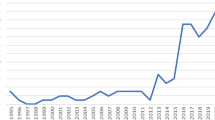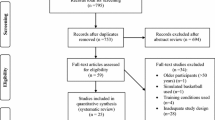Summary
American football has been one of the most popular sports in North America within the past century and has recently received support and increased participation from European nations. Two of the biggest concerns regarding participation in American football are the high incidence of injury and the physical demand for preparation. A basic understanding of the physiological systems utilised in the sport of football is necessary in order to develop optimal training programmes geared specifically for preparation as well as the requirements of individual field positions. Previously, it has been assumed that football relies primarily on an anaerobic source of energy for adenosine triphosphate (ATP) resynthesis with approximately 90% coming from the phosphocreatine (PCr) energy system. In lieu of research conducted specifically with football players, it appears that the energy contribution from the anaerobic glycolytic pathway in this sport has been underestimated. The elevated blood lactate levels observed in football players following game participation cast doubt on this hypothesis. Identifying position specific characteristics may also enhance the development of training programmes based on the requirements of the different positions. It appears that offensive and defensive linemen are generally larger, have higher levels of percent body fat and have greater absolute strength scores than all other positions. Offensive backs, defensive backs and wide receivers tend to display the lowest percentages of body fat, lower absolute strength scores, fastest times over 5, 10, 40 and 300m and the highest relative V̇O2max values. Linebackers appeared to represent a transition group mid way between the backs and linemen for size, body composition, strength, speed and endurance as well as positional duties. Findings within the literature suggest that a lack of cardiovascular development of university and professional football players may prove to be a hindrance to performance with specific regards to thermal regulation. Additional aerobic conditioning as well as the reduction of percent body fat would not only enhance performance, but might play a key role in preventing injuries and allowing a smoother transition into life after football.
Similar content being viewed by others
References
Soviet Lecture Series 3. Strength and conditioning considerations in American football. Natl Strength Conditioning Assn J 1988; 10(2): 70–1
Gleim, GW. The profiling of professional football players. Clin Sports Med 1984; 3(1): 185–97
Smith DP, Byrd RJ. Body composition, pulmonary function and maximal oxygen consumption of college football players. J Sports Med 1976; 16: 301–8
Vermeil AL, Chu D. Theoretical approach to planning a football season. Natl Strength Conditioning J Jan 1983; 33–5
White J, Mayhew JL, Piper FC. Prediction of body composition in college football players. J Sports Med 1980; 20: 317–24
Wickkiser JD, Kelly JM. The body composition of a college football team. Med Sci Sports Exerc 1975; 7(3): 199–202
Wilmore JH, Haskeil WL. Body composition and endurance capacity of professional football players. J Appl Physiol 1972; 33(5): 564–7
Wilmore JH, Parr RB, Haskell WL, et al. Football pros strengths and CV weakness — charted. Phys Sports Med 1976; Oct: 45–54
Powers SK, Howley ET. Exercise physiology: theory and application to exercise and performance. Dubuque: WC Brown Publishers, 1990
Houston ME. Biochemistry primer for exercise science. Champaign (IL): Human Kinetics Publishers, 1995
McArdle WD, Katch FI, Katch VL. Exercise physiology: energy, nutrition, and human performance. Philadelphia: Lea and Febiger, 1991
Fox EL, Matthews D. Interval training: conditioning for sports and general fitness. Orlando: Saunders College/Harcourt Brace Jovanovich, 1974
Spriet LL. Anaerobic metabolism during high-intensity exercise. In: Hargreaves M, editor. Exercise metabolism. Champaign (IL): Human Kinetics Publishers, 1995: 1–40
Brooks GA, Fahey TD. Exercise physiology: human bioenergetics and its applications. New York: MacMillan Publishing Co., 1985
Hultman E, Sjoholm H. Energy metabolism and contraction force of human skeletal muscle in situ during electrical stimulation. J Physiol (Lond) 1983; 345: 525–32
Hultman E, Sjoholm H. Substrate availability. In: Knuttgen HG, Vogel JA, Poortmans J, editors. Biochemistry of exercise. Champaign (IL): Human Kinetics Publishers, 1983: 63–75
Bompa T. Theory and methodology of training. 3rd ed. Dubuque: Kendall/Hunt Publishing Co., 1994: 6–7
Gleim GW, Witman PA, Nicholas JA. Indirect assessment of cardiovascular ‘demands’ using telemetry on professional football players. Am J Sports Med 1981; 9(3): 178–83
Craig Jr AB. Exposure time to injury in professional football. Res Quart 1968; 39: 789–91
Zapiec C, Taylor AW. Muscle fiber composition and energy utilization in CFL football players. Can J Appl Sport Sci 1979; 4(2): 140–2
Smith ME, Jackson CGR. Lactate response of college football players to practices and a game [abstract]. J Appl Sport Sci Res 1991; 5: 163
Takahashi H, Inaki M, Fujimoto K, et al. Control of the rate of phosphocreatine resynthesis after exercise in trained and untrained human quadriceps muscles. Eur J Appl Physiol 1995; 71: 396–404
Hultman E, Bergstrom J, McLennan Anderson N. Breakdown and resynthesis of phosphorylcreatine and adenosine triphosphate in connection with muscular work in man. Scand J Clin Lab Invest 1967; 19: 56–66
Burke EJ, Winslow E, Strube WV. Measures of body composition and performance in major college football players. J Sports Med 1980; 20: 173–80
Crews TR, Meadors WJ. Analysis of reaction time, speed, and body composition of college football players. J Sports Med 1978; 18: 169–74
Housh TJ, Johnson GO, Marty L, et al. Isokinetic leg flexion and extension strength of university football players. J Orthop Sport Phys Ther 1988; 9(11): 365–9
Seiler S, Taylor M, Diana R, et al. Assessing anaerobic power in collegiate football players. J Appl Sport Sci Res 1990; 4(1): 9–15
Olson JR, Hunter GR. A comparison of 1974 and 1984 player sized and maximal strength and speed efforts for division I NCAA universities. Nat Strength Cond Assoc J 1985; Jan: 26–8
Fahey TD, Akka L, Ralph R. Body composition and V̇O2max of exceptional weight trained athletes. J Appl Physiol 1975; 39: 559–61
Mayhew JL, Levy B, McCormick T, et al. Strength norms for NCAA division II college football players. Nat Strength Cond Assoc J 1987; 9(3): 67–9
Fry AC, Kraemer WJ. Physical performance characteristics of American collegiate football players. J Appl Sport Sci Res 1991; 5(3): 126–38
Barker M, Wyatt TJ, Johnson RL, et al. Performance factors, psychological assessment, physical characteristics, and football playing ability. J Strength Cond Res 1993; 7(4): 224–33
Black W, Roundy E. Comparisons of size, strength, speed and power in NCAA division 1-A football players. J Strength Cond Res 1994; 8(2): 80–5
Edgerton VR, Apor P, Roy RR. Specific tension of human elbow flexion muscles. Acta Physiol (Hung) 1990; 75: 205–16
Kanda K, Hashizume K. Factors causing difference in force output among motor units in the rat medial gastrocnemius muscle. J Physiol (Lond) 1992; 448: 677–95
McDonough MJN, Davies CTM. Adaptive response of mammalian skeletal muscle to exercise with high loads. Eur J Appl Physiol 1984; 52: 139–55
Nygaard E, Houston ME, Suzuki Y, et al. Morphology of the brachial biceps muscle and elbow flexion in man. Acta Physiol Scand 1983; 117: 287–92
Roy RR, Edgerton VR. Skeletal muscle architecture and performance. In: Komi PV, editor. Strength and power in sport. Champaign (IL): Human Kinetics Publishers 1992: 115–29
Perrin DH. Isokinetic exercise and assessment. Champaign (IL): Human Kinetics Publishers, 1993
Enoka RM. Neuromechanical basis of kinesiology. 2nd ed. Champaign (IL): Human Kinetics Publishers, 1994
Mayhew JL, Piper FC, Schwegler TM, et al. Contributions of speed, agility and body composition to anaerobic power measurements in college football players. J Appl Sport Sci Res 1989; 3(4): 101–6
Yessis M. Strength and power training program for football linemen. Nat Strength Cond Assoc J 1983; 5(1): 30–6
Elam RP, Barth BI. The relationship between tibial nerve conduction velocity and selected strength and power variables in college football linemen. J Sports Med 1986; 26: 398–405
Gauthier MM. Oversized athletes: fit or just fat? Phys Sports Med 1988; 16(12): 20–2
Kelly JM, Wickkiser JO. For ‘ideal’ football weight assess fat, not poundage. Phys Sport Med 1975; 3(12): 38–42
Blomquist CG, Saltin B. Cardiovascular adaptations of physical training. Annual Rev Physiol 1983; 45: 169–89
National Football League 1974 Injury Study. Menlo Park (CA): Stanford Research Institute, 1974
Hoette CA, Clark BA, Wolff GA. Cardiac function and physical response of 146 professional football players to graded treadmill exercise stress. J Sports Med 1986; 26: 34–42
Raskoff WJ, Goldman S, Cohn K. The ‘athletic heart’: prevalence and physiologic significance of left ventricular enlargement in distance runners. JAMA 1976; 126: 158–62
Astrand P, Rodahl K. Textbook of work physiology. New York: McGraw-Hill, 1986
Author information
Authors and Affiliations
Rights and permissions
About this article
Cite this article
Pincivero, D.M., Bompa, T.O. A Physiological Review of American Football. Sports Med 23, 247–260 (1997). https://doi.org/10.2165/00007256-199723040-00004
Published:
Issue Date:
DOI: https://doi.org/10.2165/00007256-199723040-00004




